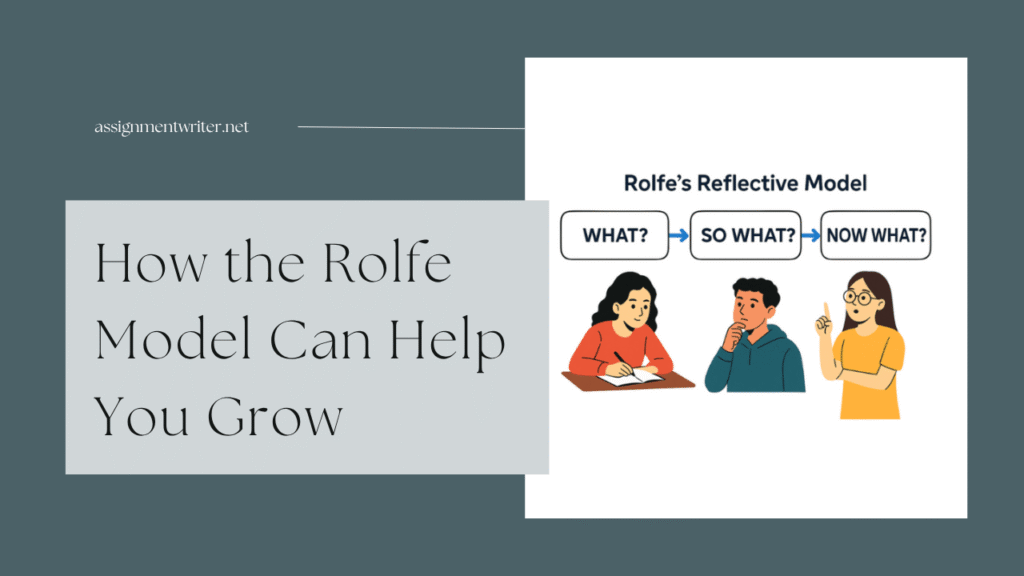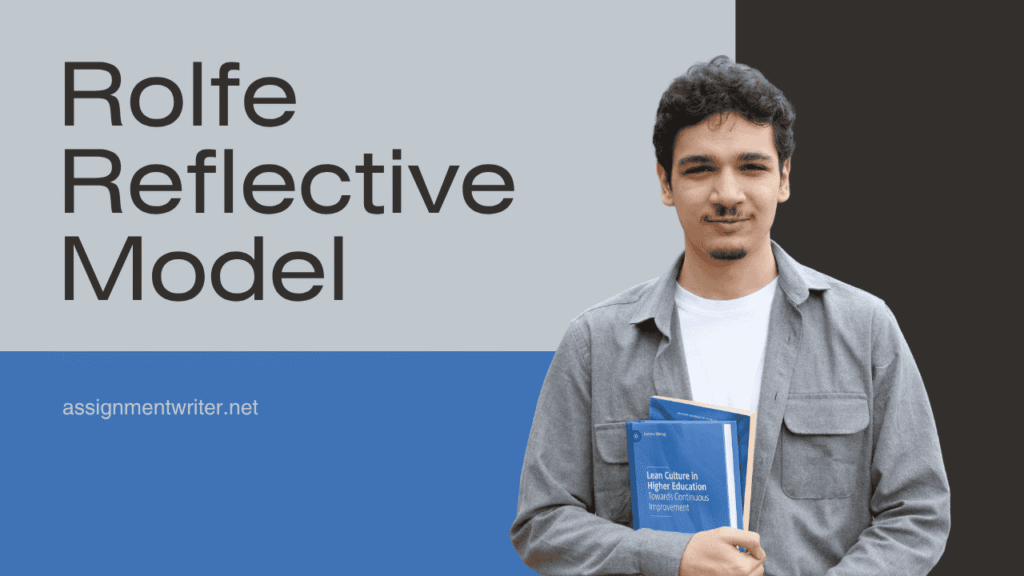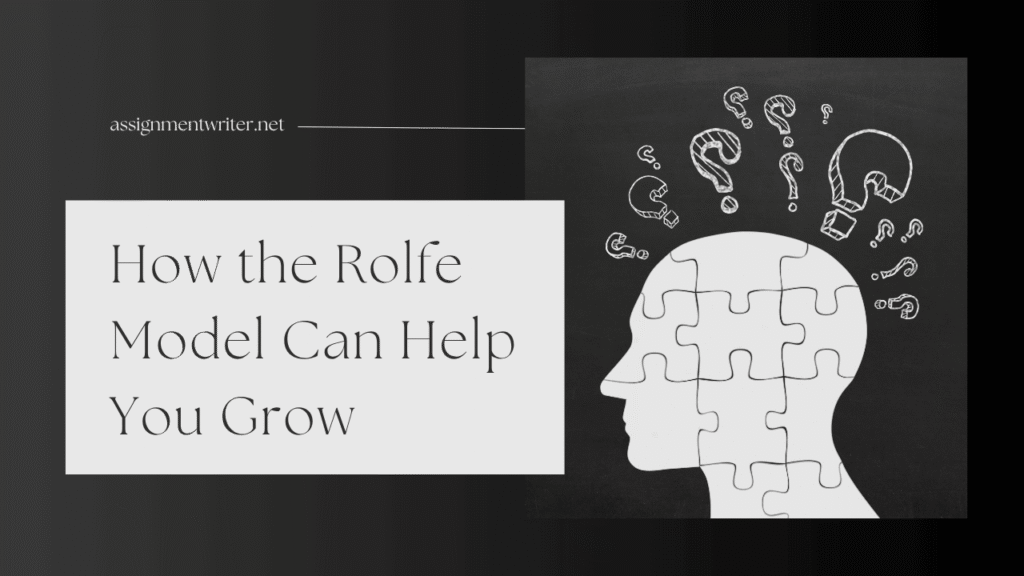Rolfe Reflective Model
Table of Contents
Toggle
Rolfe Reflective Model
Professor Gary Rolfe and colleagues gave a self-reflective model in the book ‘Framework for Reflective Practice’ in 2001. It is one of the simplest reflection models that helps to answer three simple questions, i.e., What? So what? Now what? Now, you must be thinking that the Rolfe Reflective Model is quite similar to Driscoll’s model of reflection.
Then, what is the difference? The difference lies in the questions considered in reflecting on using each model. Rolfe et al’s framework encompasses three phases, which include descriptive, knowledge-building, and action-oriented. The Rolfe Reflective model is a simple yet effective way to reflect on experiences. It starts by asking you to tell them what occurred, with the emphasis on the facts and details.
Then, this reflective Model makes you reflect on why the experience is significant, on your emotions, and what you learned. Lastly, it leads you to think about what you will do next and assists you in making practical use of your insights. This formal method will help you to learn from your experiences and design future development.
What is the Rolfe Reflective Model?
The name sounds formal, but the idea behind it is really simple.
The Rolfe Model Reflection approach is just a way to look back at something you’ve done, think about it properly, and decide what you’d do next time.
It is based on three simple questions.
What? So what? Now what? That’s the whole method.
The Rolfe et al reflective model, introduced in 2001, was developed by professionals in education and healthcare. They tried to find out a method that could make sense in real-life scenarios, not just on paper, which had been coming over for years.
And that’s why it’s still being used today, in all kinds of fields, by people who just want to learn from what life throws at them.
How Does the Rolfe Model of Reflection Work?
The Rolfe Reflective model is based on three simple questions, which you have to ask yourself and address along the way, and it turns you into a better individual in the field you are in.
The questions are:
What? So what? Now what?
These questions may seem basic, but when you think deeply, it is a complete learning framework to take you through a full circle — from the moment something happens, to how it makes you feel, and finally, to how you’ll grow from it.
Let’s take a healthcare scenario and try to understand this model in a better way, something a healthcare provider might face during their shifts.
Rolfe’s Reflective Model Example
What? – What happened?
This is where it all starts. This is not a phase to explain or justify things, but only walk yourself through facts you found.
Ask yourself:
- What took place?
- What did I do?
- Who else was involved?
- What was the outcome?
Example:
Let’s assume a doctor says
During my busy night shift, I served a patient with medication, but did not check what their most recent allergy update was.

So What? – Why does it matter?
Here, you reflect on the emotions and lessons behind the situation. This is the second state of the model, where some questions arise that address how you responded to the situation.
Ask yourself:
- How did I feel at that moment?
- What did I learn?
- Did it challenge my usual way of thinking?
- Why is this important?
Example:
Being a nurse, it made me realize how a simple miss could have serious consequences. This helped me know that even under pressure, we should not rush into action, because it can put patients’ lives at risk, even if we skip or do not adequately address one step.
Now What? – What will I do next?
This is where the real change begins. You take everything you’ve noticed and ask yourself how to do better next time.
Ask yourself:
- What will I do differently going forward?
- What can I put in place to avoid this again?
- Is there anything I should learn or better?
Example:
Henceforth, I will never fail to reconfirm the allergy update information of a patient before giving him/her the medication. No matter if I feel short on time, I will also recommend that my team highlight allergies on charts for quick spotting.
The Rolfe Reflective model helps you understand how you can change your practice and learning strategy by just answering three simple questions, and can improve yourself.
How the Rolfe Model Can Help You Grow
Whether you are a professional working in any particular field or someone learning anything new, the Rolfe Reflective Model is helpful in both cases.
Using this model, you can achieve a significant milestone by just applying those three simple questions. Not only professional like a nurse, but you can apply it at any learning phase too.

Here’s how it can benefit you as a working individual or as a learner.
When You’re Already Doing the Work
This model is ideal and fits well in a situation when you are involved in real-life jobs. This is why this model is sometimes called the Rolfe reflective practice model. More specifically, in a fast-paced sector like healthcare or teaching, you can benefit from this model the most.
It does not require much time from you to practice; this is simple and easy to implement alongside your practice.
Why it helps:
- Simple: Only three questions guide you, and improve you in your domain
- Quick: It only takes a few minutes to reflect on a situation and act accordingly
- Useful: It tells you clearly what went wrong and what is right.
- Builds confidence: You learn and are now prepared to do better next time
When You’re Still Figuring Things Out
The model also works great for students. When you do not know how to begin, it makes reflective writing, journaling, and assignments a lot easier.
Why it helps:
- Easy to remember: All you have to remember is what? So what? Now what?
- By applying this model, you think deeper about a situation than surface-level thinking.
- Once applied in learning, you learned how to turn a mistake into a learning experience
- This model enables you to develop learning behaviour and become a better entity later in your field.
And so, being in a classroom or being already in a professional position, this model would make you a better person than your present one. It assists you in realizing the weakness you had in the past, learn it, and then be better next time.
FAQS
How does the Rolfe Model of Reflection help in real-life practice?
The Rolfe Model Reflection guides users to learn things through experience using the three main questions. It treats professionals and students the same to improve their performance through self-assessment.
What does ‘So What Now What’ mean in reflection?
So what part of the model focuses on how significant the event was, what you learned from it, while the now part identifies the next step for improvement.
Together, they encourage and motivate practical learning in everyday situations.
How does the model of reflection, ‘What So What Now What,’ support learning?
The model of reflection provides a clear framework, which you can apply to promote deeper thinking, not surface-level, and aids you in continuous growth.
Can this reflection approach be used for personal growth?
Absolutely. This model is not limited to professional settings. You can apply this in your daily life and choices, learn from them, and grow as an individual.
Why does reflective practice help in learning in a fast-paced profession?
Reflective practice provides an opportunity to stop action, review its results, think over the next step, and perform it better. It is useful, particularly in a case when you are under pressure.
Search
Recent Post
Categories
No Plagiarism | No AI A+ Grade Guaranteed


